No products in the cart.

How to Give, Receive, and Request Feedback
Reading Time: minutes remaining
Dance feedback is like hugs. Everybody can benefit from them, but no one will admit to it, and it can get awkward to ask.
An no one likes an unwanted hug.
This article is your go-to source on how to gracefully GET and GIVE feedback. Read on to discover:
- The 3 conditions required for feedback to be appropriate: Context, Source, and Consent
- Do’s and Don’ts and specific examples of what to say to your peers when trying to:
- Give feedback
- Request feedback
- Receive feedback
At the end, you can get PRINTABLE HANDOUT you can share with your community!
Feedback = an essential human need
Every human needs feedback in their life.
- Answers to questions = Feedback
- Knowing your score on a test = Feedback
- Gauging someone’s their reaction to your birthday gift = Feedback
- Watching the spedometer to make sure you’re not speeding = Feedback
- Seeing if the ball you kicked went in the goal = Feedback
And we all know the odds of learning this dance properly off of YouTube are pretty slim – you NEED feedback to get the right feeling.
What feedback is NOT:
Feedback is not the same as advice.
Feedback is simply a report on the results of your past effort, whereas advice is a recommendation for the future, not a reflection of the past.
It’s possible to get feedback with no advice (your partner winces but says nothing) or advice with no feedback (“you should hold your hand like this”). So when we're talking about feedback, we're not automatically assuming any advice is attached.
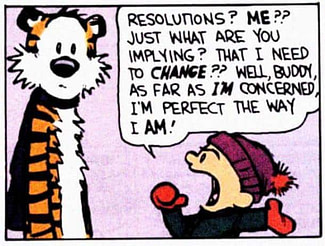
Be careful not to conflate feedback and judgement. All feedback is open to interpretation – you can decide what (if anything) you want to do about that feedback. If the feedback indicates that something you did was not in alignment with your goal, then it simply needs to be adjusted. It doesn’t mean anything about your value as a dancer or a person.
So where can you get this feedback gold?
Sure, you can have a buffet of feedback when you take a private lesson, but these aren’t always accessible. You might get a little bit from the teacher in a group class, but not enough to thrive on. You need more.
If you want to progress to the next level, you need more feedback.
In a social dance setting, you are likely working on some “homework” that you got either from the group class that just ended, or the last private lesson you had with your instructor. This homework could be an old habit you’re trying to reform, or a new skill you’re dying to master.
Your peers are likely doing the same – they have their own set of skills they are studying and working on, and you want to support each other, right? A bit of feedback on your attempts sure would be helpful.
But from where? When? How?
Deciding the When, Who, and How
All feedback on your dancing is valuable, but what makes it appropriate and appreciated or not is the source, the context, and the consent.
1. Context – Is it the right time to give feedback?
The social norm is that it is considered inappropriate to offer feedback on the social dance floor. This is to prevent unsolicited advice offered by some non-teachers who feel the need to boost their own ego under the guise of “just trying to help”. Not generalizing all social dancers here, but it is unfortunately much more common of an occurrence than it appears.
Just to make this really clear: Unless safety is a concern, please refrain from making any critical, constructive, or "helpful" comments on the social dance floor other than obvious encouragement and gratitude.
This kind of feedback is unwelcome and can be quite damaging to newbie dancers who don’t know how to stand up for themselves or receive that feedback yet. There are countless stories of newbie dancers who, after being reprimanded by a partner who was “just trying to help”, left the dance in tears and didn’t come back.
The newbie’s fragile egos are only the tip of the iceberg – the experienced dancers are usually attending social dance parties to relax and enjoy dancing and are not necessarily in “learning mode”, so your advice is an unwelcome interruption.
Just to make sure the point is clear: dancers who offer unsolicited advice on the social floor should be issued a ticket and a fine. ;P Indulging your impulse to “help” is not worth the social ostracism that will ensue.

If someone tries to offer you advice on the social floor or feedback in a workshop when the teacher didn’t explicitly invite it, you don’t need to submit to it. Stand up for yourself and interrupt them with a polite but assertive “Thanks, but I just want to dance.” Read on for more tactics like this.
2. Source – Am I the right person to give this feedback?
Teachers should be the primary, ideal source for feedback. But there are some circumstances that encourage and promote feedback between peers:
- Group of friends meet up to practice together
- Guided practice session, led by a teacher
- Within a workshop, as directed by the teacher
- A conversation with a trusted friend

In these cases, it is not the teachers providing most of the feedback – students rely on each other to offer feedback on their application of the “homework”. Hopefully their teacher has given them some “do’s and don’ts” about how the move or skill should be practiced.
But students can’t be expected to be expert evaluators and advisors on the new skill. Peer feedback is not an evaluation, simply a response to a trial. Your peer is simply reporting the result of your effort, but is not judging you on it. This makes the feedback task a little less daunting, but this is not a reason to treat it casually. It doesn’t matter if you have more knowledge to share – your role in this circumstance is simply to provide a reflection of your partner’s efforts, without judgement.
If someone tries to offer feedback in the right context, but is not a teacher or your trusted dance partner or friend, you don’t need to submit to it: stand up for yourself and say “Thanks, but I will ask my teacher about that.” See more tactics like this below.
3. Consent – Have they given me permission to give them feedback?
Since I’m a big fan of feedback of any kind, I used to make the mistake of assuming that everyone loves feedback as much as I do. This backfired on me when people reacted poorly to my feedback even though it was helpful and kind. In those cases, it wasn’t the Context or the Source that was the problem – it was that I didn’t ask for their Consent first – I didn’t give them a choice in the moment of hearing the feedback or not.
Through many communication courses and educator trainings, I learned that feedback is often only received well if the receiver is in a mindset to receive it in that moment. In other words, you need to take into account the feelings and headspace of the person you want to deliver feedback to, BEFORE you decide to follow through and deliver it. This involves some kind of asking for permission.
When you ask for permission before giving feedback,
- You show you respect them by giving them a choice
- They are empowered to take control of their learning experience
- They have a chance to mentally prepare themselves for potential criticism.

If a teacher or practice partner tries to offer you feedback in the right Context, but they didn’t ask permission and you are not mentally prepared for it, you don’t need to submit to it: stand up for yourself and say, “I’m not in the right frame of mind for this right now. Could we bookmark this for later?” See more tactics like this below.
Bottom line: if the right Context, Source, or Consent is missing, SAVE YOUR FEEDBACK. Here’s a handy-dandy chart to help you remember, courtesy of Chelsea Lee.
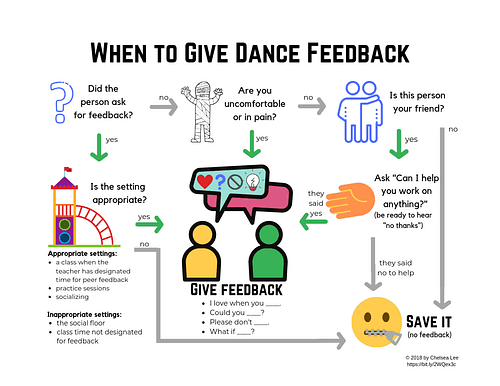
Source: Chelsea Lee
Guidelines and examples of better peer feedbacking
Here are some guidelines to negotiate the delicate art of requesting, giving, and receiving feedback with your peers.
Since we have had dozens of teachers and community leaders ask us for permission to share the following tips, we have created a printable handout you distribute at your classes or social dance party! Read to the end to get it!

Requesting Feedback
Tips for when you want to ask a peer for feedback
- Don’t request feedback from every single partner – not every dance needs to be about learning.
- Do request feedback from all levels of partners. Your goal is to figure out what works with each person, so everyone’s feedback is valuable.
- Feedback is not an evaluation, so don’t take it personally as a reflection of your whole dance.
- Ask your partner first if they mind giving you feedback.
- Request feedback in advance. Don’t wait till the end of the dance.
- Don’t demand feedback or impede someone from moving on to a new partner. You won’t make any friends.
- Be specific. General comments don’t help anyone.
- Ask for their personal preferences so you can note the similarities and differences.
- Ask your teacher before the dance starts, not after, if they mind giving you feedback. They are usually focused on having fun, not critiquing.
- If you ask a teacher for feedback, be prepared for them to refer you to a private lesson instead.
When Asking / Receiving, do this: | ✓✓ Do Say ✓✓ | ✗ ✗ Don’t Say ✗ ✗ |
|---|---|---|
Ask a specific question, don’t ask for a general evaluation | “Do you feel I gave you enough support in that dip?” | “Any feedback?” |
Ask them in advance to signal you when/if they notice a particular error. | “Can you please tell me if I grip your fingers too much? | After the song is over: “How were my fingers?” |
Ask for personal preferences, not for advice | “Do you prefer a stronger push here?” | “How hard am I supposed to push?” |
Ask for a quick check-in during a dance, not a long-answer question. | “Am I giving you enough | “So how does this ‘stretch’ thing work?” |
Teachers are not automatically | Before a dance: “Would you | And the end: “Can you give me any pointers?” |
Request an experienced partner to give you specific opportunities. | To an experienced | To a beginner dancer: “Spin me more!” |
Giving Feedback
Tips for how to give feedback to a peer (in an appropriate context)
- Avoid annoying your partner by giving unsolicited feedback.
- Ask for permission first, or wait to be invited before commenting.
- Not every dance needs to include feedback. It’s ok to decline a request for feedback.
- Assume that everyone is doing the best they can.
- Check yourself first: never assume the other person is the sole cause of the problem.
- Remove yourselves and have a private conversation.
- Giving feedback is an act of caring. Do it caringly.

- Small doses: 1-3 points, no longer than one extra song.
- Consider which type of feedback you will deliver before you start (see diagram)
- Be sure your feedback is constructive and not destructive (see chart below)
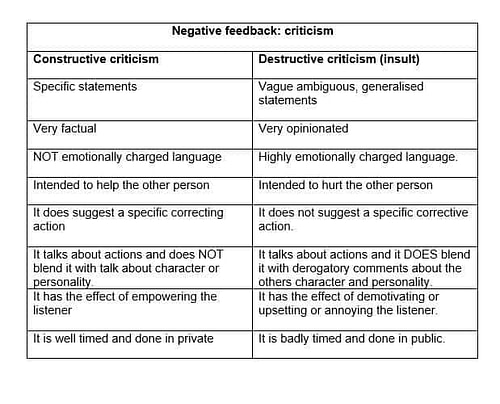
Feedback Tip | ✓✓ Do Say ✓✓ | ✗ ✗ Don’t Say ✗ ✗ |
|---|---|---|
Ask for permission | “I have an idea that might help, would you like to hear it?” | “Oh, you’re doing it wrong – here’s what you need to do instead” |
Use “I” messages | “I’m not feeling where you want me to go” | “You’re not leading it properly” |
Focus on the skill or body part, not the person | “I feel a lot of tension in your arm” | “You’re too heavy” |
Make requests and avoid commands | “Oops, need more room please!” | “Get out of my slot!” |
Use specific examples, if possible | “When I catch your back on the whips, I need you to keep going back into my connection” | “Your whip doesn’t feel right” |
Don’t exaggerate | “Once in a while I feel pulled out of my anchor” | “You never let me anchor” |
Make a request: | “Remember your frame!” | “Don’t break your frame!” |
Avoid “don’ts” | “Once in a while I feel pulled out of my anchor” | “You never let me anchor” |
Be constructive, not critical | “I think it might work better if you move your hand higher” | “Your hand is too low” |
Don’t teach; refer to a teacher | “That sounds like a great question to ask my teacher.” | “That’s not right- let me show you how to do it” |
Receiving Feedback
Tips for how to receive feedback from a peer
- Be open minded, calm, and mature. Check your emotional state.
- Evaluate the source of the feedback – all feedback has value, but not necessarily equal value.
- Receiving feedback is an act of caring. By being open, you show you care to improve.
- Every dancer at every level needs feedback to thrive.
- Feedback is neutral: neither positive not negative. You have control over its interpretation.
- Compliments feel good, but don’t help you get closer to your goals.
- Clarify points without being defensive.
- Remember the person giving you feedback is not automatically an expert and might have no idea what they are talking about.
- Keep in mind you do not necessarily have to do anything with their feedback.
- Say when your feedback bucket is “full”.
- Listen completely before responding. Paraphrase to make sure you did not misunderstand.
- Thank the person for their comments.
Feedback Tip | ✓✓ Do Say ✓✓ | ✗ ✗ Don’t Say ✗ ✗ |
|---|---|---|
Decide if you are ready | “I would love to hear more, but I’m not the right headspace right now. Can I get back to you?” | (say nothing, then walk away feeling ambushed) |
Shut down or decline feedback from inappropriate sources | “Thanks I’ll ask my teacher about that” | “Thanks” |
Ask questions to probe or clarify | “Could you expand on that suggestion?” or “Do you mean like this or like that? | (nothing, then walk away confused) |
Paraphrase to confirm your understanding | “So, what I’m hearing is, you need more X from me?” | (nothing, then walk away assuming something incorrectly) |
Don’t interrupt to defend yourself | (wait until person stops speaking) | “No I didn’t! I was just trying to….” |
Validate the person’s perspective | “I understand that it must be confusing for you when I do that” | “Everyone else I dance with doesn’t seem to mind” |
Thank the person for their feedback, if it was appropriate | “Thank you for the feedback” or “Please feel free to approach me again with concerns like this” | “Ok, whatever.” |
Hungry for more?
This material was taken directly from one of the 43 lessons in the Swing Literacy Dancer Development Program.

Here’s an interesting research finding:
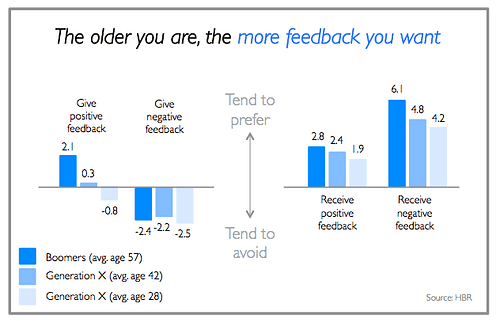
“Feedback is the breakfast of champions” – Ken Blanchard
Share this in your community!

We highly recommend sharing this whole article in your community’s Facebook group and email list.
But sometimes you really want the message hit home by handing people a piece of paper to remind them.
So we made you a free printable version! Enter your email below to get instant access:
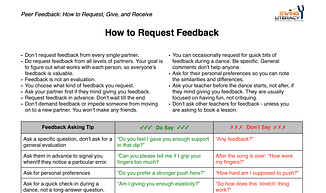
Get Your Printable Feedback Guide
Sign up here to get your Printable Feedback Guide as well as occasional tips and resources from our Dancer Development Insiders' Club.
 Dance feedback is like hugs. Everybody can benefit from them, but no one will admit to it, and it can get awkward to ask.
Dance feedback is like hugs. Everybody can benefit from them, but no one will admit to it, and it can get awkward to ask.
An no one likes an unwanted hug.
This article is your go-to source on how to gracefully GET and GIVE feedback. Read on to discover:
- The 3 conditions required for feedback to be appropriate: Context, Source, and Consent
- Do’s and Don’ts and specific examples of what to say to your peers when trying to:
- Give feedback
- Request feedback
- Receive feedback
At the end, you can get printable handout you can share with your community!
Feedback = an essential human need
Every human needs feedback in their life.
- Answers to questions = Feedback
- Knowing your score on a test = Feedback
- Guaging someone’s their reaction to your birthday gift = Feedback
- Watching the spedometer to make sure you’re not speeding = Feedback
- Seeing if the ball you kicked went in the goal = Feedback
And we all know the odds of learning this dance properly off of YouTube are pretty slim – you NEED feedback to get the right feeling.
What feedback is NOT:
Feedback is not the same as advice. Feedback is simply a report on the results of your past effort, whereas advice is a recommendation for the future, not a reflection of the past. It’s possible to get feedback with no advice (your partner winces but says nothing) or advice with no feedback (“you should hold your hand like this”). So when we are talking about feedback, we are not automatically assuming any advice is attached.
Be careful not to collapse feedback and judgement. All feedback is open to interpretation – you can decide what (if anything) you want to do about that feedback. If the feedback indicates that something you did was not in alignment with your goal, then it just needs to be adjusted. It doesn’t mean anything about your value as a dancer or a person.
So where can you get this feedback gold?
Sure, you can have a buffet of feedback when you take a private lesson, but these aren’t always accessible. You might get a little bit from the teacher in a group class, but not enough to thrive on. You need more. If you want to progress to the next level, you need more feedback.
In a social dance setting, you are likely working on some “homework” that you got either from the group class that just ended, or the last private lesson you had with your instructor. This homework could be an old habit you’re trying to reform, or a new skill you’re dying to master. Your peers are likely doing the same – they have their own set of skills they are studying and working on, and you want to support each other, right? A bit of feedback on your attempts sure would be helpful. But from where? When? How?
Deciding the When, Who, and How
All feedback on your dancing is valuable, but what makes it appropriate and appreciated or not is the source, the context, and the consent.
1. Context – Is it the right time to give feedback?
The social norm is that it is considered inappropriate to offer feedback on the social dance floor. This is to prevent unsolicited advice offered by some non-teachers who feel the need to boost their own ego under the guise of “just trying to help”. Not generalizing all social dancers here, but it is unfortunately much more common an occurrence than it appears.
This kind of feedback is unwelcome and can be quite damaging to newbie dancers who don’t know how to stand up for themselves or receive that feedback yet. There are countless stories of newbie dancers who, after being reprimanded by a partner who was “just trying to help”, left the dance in tears and didn’t come back.
 The newbie’s fragile egos are only the tip of the iceberg – the experienced dancers are usually attending social dance parties to relax and enjoy dancing and are not necessarily in “learning mode”, so your advice is an unwelcome interruption.
The newbie’s fragile egos are only the tip of the iceberg – the experienced dancers are usually attending social dance parties to relax and enjoy dancing and are not necessarily in “learning mode”, so your advice is an unwelcome interruption.
Just to make sure the point is clear: dancers who offer unsolicited feedback on the social floor should be issued a ticket and a fine. ;P Indulging your impulse to “help” is not worth the social ostracism that will ensue.
| If someone tries to offer you feedback on the social floor or in a workshop when the teacher didn’t explicitly invite it, you don’t need to submit to it. Stand up for yourself and interrupt them with “Thanks, but I just want to dance.” Read on for more tactics like this. |
2. Source – Am I the right person to give this feedback?

Teachers should be the primary, ideal source for feedback. But there are some circumstances that encourage and promote feedback between peers:
- Group of friends meet up to practice together.
- Guided practice session, led by a teacher
- Within a workshop, as directed by the teacher
- A conversation with a trusted friend
In these cases, it is not the teachers providing most of the feedback – students rely on each other to offer feedback on their application of the “homework”. Hopefully their teacher has given them some “do’s and don’ts” about how the move or skill should be practiced.
But students can’t be expected to be expert evaluators and advisors on the new skill. Peer feedback is not an evaluation, simply a response to a trial. Your peer is simply reporting the result of your effort, but is not judging you on it. This makes the feedback task a little less daunting, but this is not a reason to treat it casually. It doesn’t matter if you have more knowledge to share – your role in this circumstance is simply to provide a reflection of your partner’s efforts, without judgement.
| If someone tries to offer feedback in the right Context, but is not a teacher or your trusted dance partner or friend, you don’t need to submit to it: stand up for yourself and say “Thanks, but I will ask my teacher about that.” See more tactics like this below. |
3. Consent – Have they given me permission to give them feedback?
Since I’m a big fan of feedback of any kind, I used to make the mistake of assuming that everyone loves feedback as much as I do. This backfired on me when people reacted poorly to my feedback even though it was helpful and kind. In those cases, it wasn’t the Context or the Source that was the problem – it was that I didn’t ask for their Consent first – I didn’t give them a choice in the moment of hearing the feedback or not.
 Through many communication courses and educator trainings, I learned that feedback is often only received well if the receiver is in a mindset to receive it in that moment. In other words, you need to take into account the feelings and headspace of the person you want to deliver feedback to, BEFORE you decide to follow through and deliver it. This involves some kind of asking for permission.
Through many communication courses and educator trainings, I learned that feedback is often only received well if the receiver is in a mindset to receive it in that moment. In other words, you need to take into account the feelings and headspace of the person you want to deliver feedback to, BEFORE you decide to follow through and deliver it. This involves some kind of asking for permission.
When you ask for permission before giving feedback,
- You show you respect them by giving them a choice
- They are empowered to take control of their learning experience
- They have a chance to mentally prepare themselves for potential criticism.
| If a teacher or practice partner tries to offer you feedback in the right Context, but they didn’t ask permission and you are not mentally prepared for it, you don’t need to submit to it: stand up for yourself and say, “I’m not in the right frame of mind for this right now. Could we bookmark this for later?” See more tactics like this below. |
Bottom line, if the right, Context, Source, or Consent is missing, SAVE YOUR FEEDBACK. Here’s a handy-dandy chart to help you remember, courtesy of Chelsea Lee.

Guidelines and examples of better peer feedbacking
Here are some guidelines to negotiate the delicate art of requesting, giving, and receiving feedback with your peers.
|
Requesting Feedback
Tips for when you want to ask a peer for feedback
- Don’t request feedback from every single partner – not every dance needs to be about learning.
- Do request feedback from all levels of partners. Your goal is to figure out what works with each person, so everyone’s feedback is valuable.
- Feedback is not an evaluation, so don’t take it personally as a reflection of your whole dance.
- Ask your partner first if they mind giving you feedback.
- Request feedback in advance. Don’t wait till the end of the dance.
- Don’t demand feedback or impede someone from moving on to a new partner. You won’t make any friends.
- Be specific. General comments don’t help anyone.
- Ask for their personal preferences so you can note the similarities and differences.
- Ask your teacher before the dance starts, not after, if they mind giving you feedback. They are usually focused on having fun, not critiquing.
- If you ask a teacher for feedback, be prepared for them to refer you to a private lesson instead.
Asking/Receiving Tip | ✓✓ Do Say ✓✓ | ✗ ✗ Don’t Say ✗ ✗ |
Ask a specific question, don’t ask for a general evaluation | “Do you feel I gave you enough support in that dip?” | “Any feedback?” |
Ask them in advance to signal you when/if they notice a particular error. | “Can you please tell me if I grip your fingers too much? | After the song is over: “How were my fingers?” |
Ask for personal preferences, not for advice | “Do you prefer a stronger push here?” | “How hard am I supposed to push?” |
Ask for a quick check-in during a dance, not a long-answer question. | “Am I giving you enough | “So how does this ‘stretch’ thing work?” |
Teachers are not automatically | Before a dance: “Would you | And the end: “Can you give me any pointers?” |
Request an experienced partner to give you specific opportunities. | To an experienced | To a beginner dancer: “Spin me more!” |
Giving Feedback
Tips for how to give feedback to a peer (in an appropriate context)
- Avoid annoying your partner by giving unsolicited feedback.
- Ask for permission first, or wait to be invited before commenting.
- Not every dance needs to include feedback. It’s ok to decline a request for feedback.
- Assume that everyone is doing the best they can.
- Check yourself first: never assume the other person is the sole cause of the problem.
- Remove yourselves and have a private conversation.
- Giving feedback is an act of caring. Do it caringly.
- Be courteous, tactful, and mature.
- Small doses: 1-3 points, no longer than one extra song.
- Consider which type of feedback you will deliver before you start (see diagram)
- Be sure your feedback is constructive and not destructive (see chart below)

Feedback Tip | ✓✓ Do Say ✓✓ | ✗ ✗ Don’t Say ✗ ✗ |
Ask for permission | “I have an idea that might help, would you like to hear it?” | “Oh, you’re doing it wrong – here’s what you need to do instead” |
Use “I” messages | “I’m not feeling where you want me to go” | “You’re not leading it properly” |
Focus on the skill or body part, not the person | “I feel a lot of tension in your arm” | “You’re too heavy” |
Make requests and avoid commands | “Oops, need more room please!” | “Get out of my slot!” |
Use specific examples, if possible | “When I catch your back on the whips, I need you to keep going back into my connection” | “Your whip doesn’t feel right” |
Don’t exaggerate | “Once in a while I feel pulled out of my anchor” | “You never let me anchor” |
Make a request: | “Can you give me more compression here, please?” | “You’re too squishy!” |
Avoid “don’ts” | “Remember your frame!” | “Don’t break your frame!” |
Be constructive, not critical | “I think it might work better if you move your hand higher” | “Your hand is too low” |
Don’t teach; refer to a teacher | “That sounds like a great question to ask my teacher.” | “That’s not right- let me show you how to do it” |
Receiving Feedback
Tips for how to receive feedback from a peer
- Be open minded, calm, and mature. Check your emotional state.
- Evaluate the source of the feedback – all feedback has value, but not necessarily equal value.
- Receiving feedback is an act of caring. By being open, you show you care to improve.
- Every dancer at every level needs feedback to thrive.
- Feedback is neutral: neither positive not negative. You have control over its interpretation.
- Compliments feel good, but don’t help you get closer to your goals.
- Clarify points without being defensive.
- Remember the person giving you feedback is not automatically an expert and might have no idea what they are talking about.
- Keep in mind you do not necessarily have to do anything with their feedback.
- Say when your feedback bucket is “full”.
- Listen completely before responding. Paraphrase to make sure you did not misunderstand.
- Thank the person for their comments.
Feedback Tip | ✓✓ Do Say ✓✓ | ✗ ✗ Don’t Say ✗ ✗ |
| Decide if you are ready | “I would love to hear more, but I’m not the right headspace right now. Can I get back to you?” | (say nothing, then walk away feeling ambushed) |
| Shut down or decline feedback from inappropriate sources | “Thanks I’ll ask my teacher about that” | “Thanks” |
| Ask questions to probe or clarify | “Could you expand on that suggestion?” or “Do you mean like this or like that? | (nothing, then walk away confused) |
| Paraphrase to confirm your understanding | “So, what I’m hearing is, you need more X from me?” | (nothing, then walk away assuming something incorrectly) |
| Don’t interrupt to defend yourself | (wait until person stops speaking) | “No I didn’t! I was just trying to….” |
| Validate the person’s perspective | “I understand that it must be confusing for you when I do that” | “Everyone else I dance with doesn’t seem to mind” |
| Thank the person for their feedback, if it was appropriate | “Thank you for the feedback” or “Please feel free to approach me again with concerns like this” | “Ok, whatever.” |
Hungry for more?
This material was taken directly from one of the 43 lessons in the Swing Literacy Dancer Development Program. Go see for yourself:
Here’s an interesting research finding:

“Feedback is the breakfast of champions” – Ken Blanchard
Share this in your community!


We highly recommend sharing this whole article in your community’s Facebook group and email list.
But sometimes you really want the message hit home by handing people a piece of paper to remind them.
So we made you a free printable version! Enter your email below to get instant access:
[activecampaign form=37]
SaveSave
Leave a Reply
Cancel replyYou must be logged in to post a comment.
This site uses Akismet to reduce spam. Learn how your comment data is processed.
{"email":"Email address invalid","url":"Website address invalid","required":"Required field missing"}
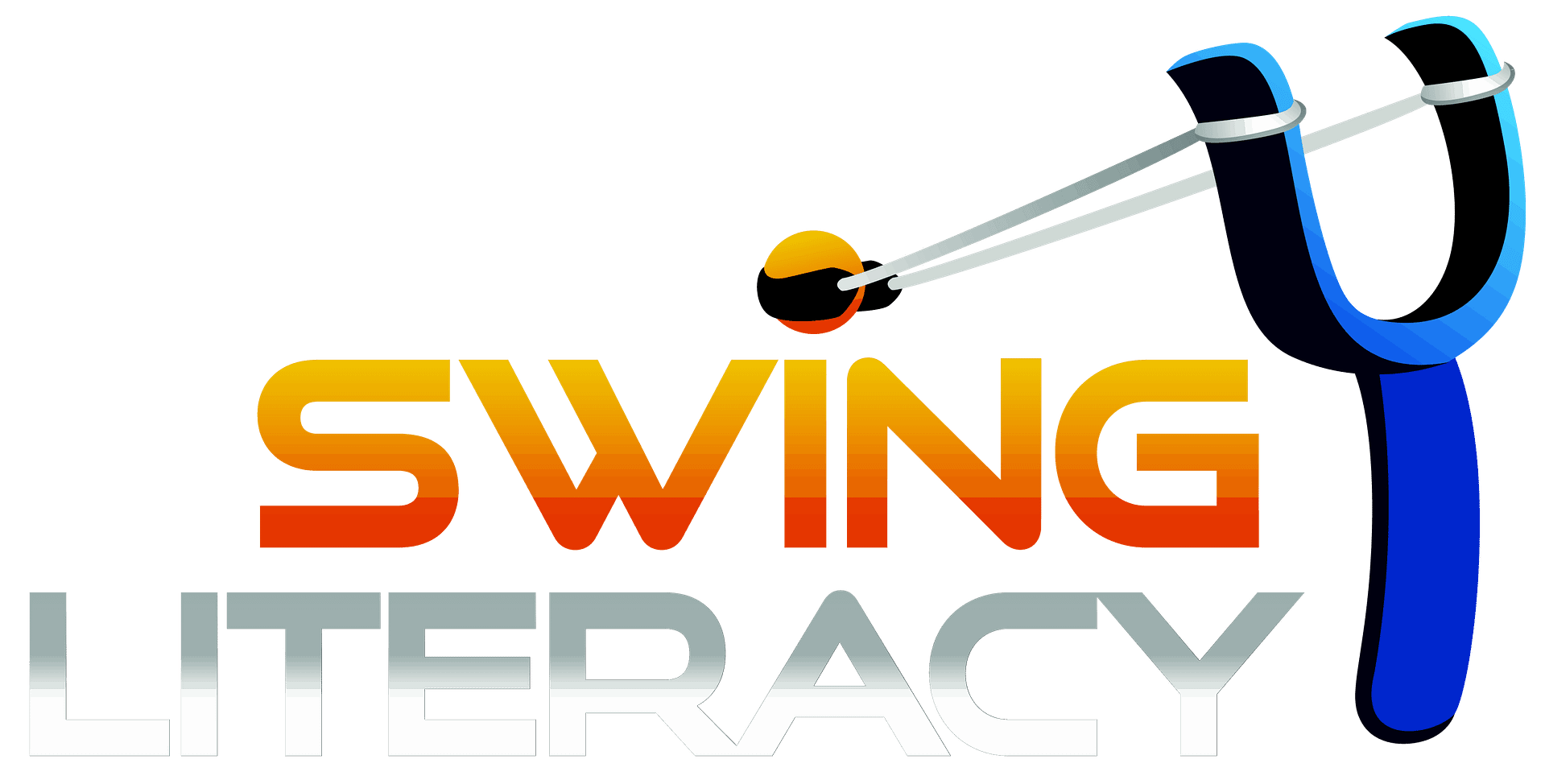

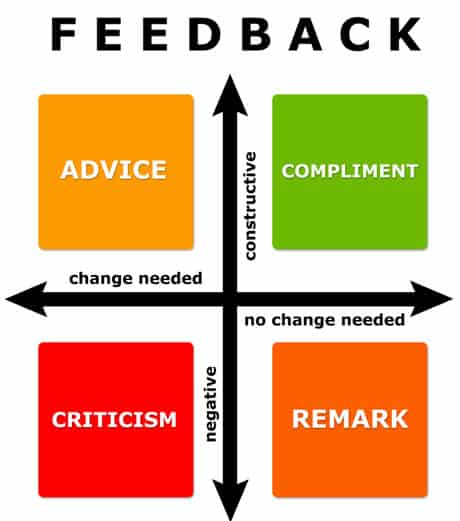

I love all feed back and love the article
Great article! Thanks so much – I will be sharing it with my students 🙂
Another good article-thanks! I will share it with my students!
This is a brilliant article! I am a budding/blossoming dancer AND a master coach. Everything is feedback pretty much and I love this article both for dancing evolution. THANK YOU!!!!
Is it ok to share this on my FB page? This is so excellent. Thank you so much!
Definitely! Please share any Blog articles you think your community/friends would find helpful!
shericourtney@yahoo.com
Everyone should have the opportunity to learn these concepts from the very beginning so they
don't flounder through the miserable mistakes I made.
Please send me a printable version of How to Give, Receive and Request Feedback
Thank you! I feel like I should say more, and that's all I got at the moment. Feedback is the fuel, inspiration and information for mastery and I appreciate how you've laid it all out here.
Very well written and organized article thanks
This is great information. Thank you
I like that you show examples of what to do vs what not to do regarding being thoughtful and meaningful with specific FB if FB is desired by dancer.
❤FB suggestions-what to do and what not to do……. Useful relevant responses dancers like me can use to be more proactive communicating
This is really good information to know.